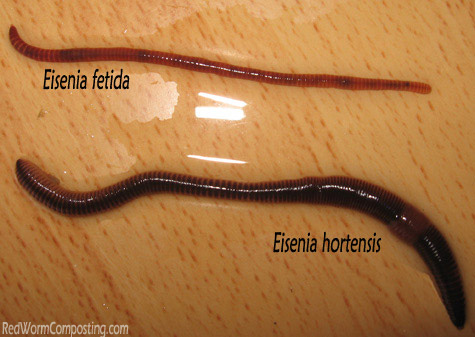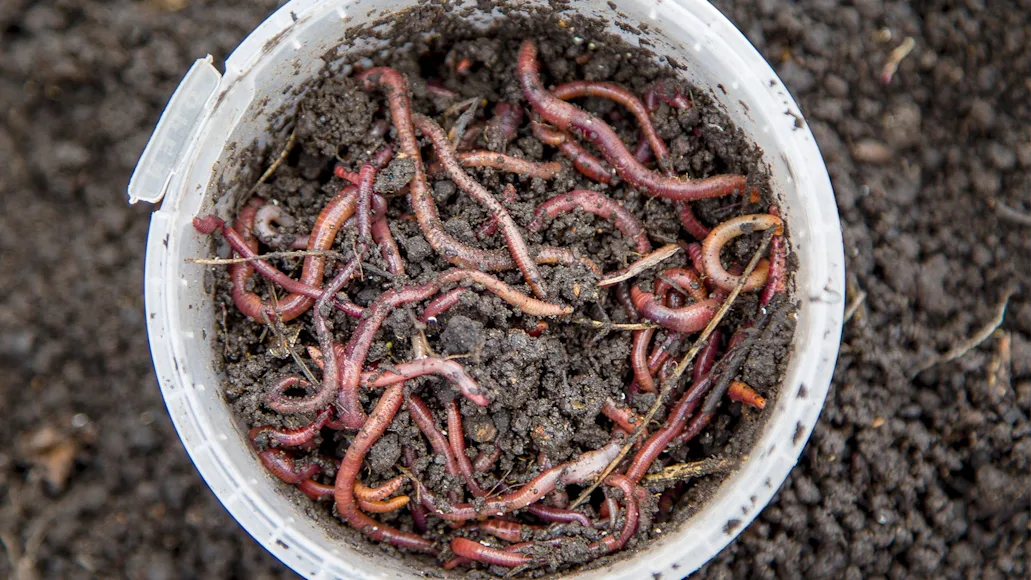Some Known Questions About Where To Find Red Wigglers.
All about Where To Find Red Wigglers
Table of ContentsWhere To Find Red Wigglers - The FactsThe Best Guide To Where To Find Red WigglersWhere To Find Red Wigglers - An OverviewThe smart Trick of Where To Find Red Wigglers That Nobody is Talking AboutSome Known Incorrect Statements About Where To Find Red Wigglers More About Where To Find Red Wigglers
For finest outcomes, you want to shoot for concerning 60-70% dampness level. The most basic test for this is to squeeze a handful as difficult as you can. At the ideal dampness degrees which is just under 70% that handful must barely produce one drop of fluid. pH in a worm container is pretty easy to maintain.
The Indian Blue is starved, but additionally chooses a warmer climate and it additionally exhibits a propensity to get away the bin. The red wiggler is a hardy worm and isn't as choosy about its environment. I like to call it the Ford Taurus of vermicomposting worms; you will not brag to your hardcore composting pals that you have them, but they will serve you well.
As Faucet showed, an angler can do an excellent bargain to make a worm extra enticing.
Facts About Where To Find Red Wigglers Revealed
I believe you will certainly too if you try them. The smaller the trout stream, the much better worms job is an axiom that hasn't transformed in the 100-plus years since Perry composed his post. Fishermens of his age just stuck their rickety fishing pole via alder tangles and went down a weighted worm right into a deep opening.
Early morning is prime feeding time, and the lightweight lure's slow-moving descent leaves 5 inches of agonizing protein in full view for rather a while. After you've made the cast, keep the bail open and put the rod in a forked stick. The line will drop off the pole in slow loops as the worm clears up, however generally the sluggish loops will become a blur, and the early morning will instantly get rather interesting.
I normally make use of an entire 'spider, like marabou clothing, and drop the pole for two or three seconds when I get a hit.
If it's there, established the hook with a move instead than a jerk. When in a while you'll locate on your own hooked to those slow, passionate tugs, and really feel the weight of a great walleye.
Where To Find Red Wigglers for Beginners
When the hefty walleyes proceed to the big-water shoals in the late summer season, attempt pursuing them with a bucktail jig and a 1-inch pinch of nightcrawler. The bait covers the hook factor, disperses weeds, and provides a preference of target. With nothing dangling or waving, it remains safe and secure no matter current, casts, or ambitious panfish.
Whether you're wading or fishing from a watercraft, wandering worms is just one of the excellent searching methods for bigger rivers. For trout, a spade-dug, 4-inch yard worm is the right size; for bass, walleyes, and steelhead, a nightcrawler might be a better option. The trick is to drift the lure via feeding and holding areas since fish in current are not mosting likely to ferret out the bait, as they may in still water.
Fish the shifts: mouths of tributaries, bank-side slicks, and the sides of huge pools. His adage uses to any number of angling maneuvers, including the issue of including an item of worm to a wet fly.

6 Easy Facts About Where To Find Red Wigglers Described
Load it with shredded paper, leaves, peat moss, and dirt. Moisten lightly. Cover and allow sit for a week. Add a couple of hundred worms and feed them two times a week. Keep the bed linens moist but not damp. On the food selection: lettuce, vegetables and fruit waste, and the occasional nongreasy surplus.
Simply like veggie scraps, you can take your utilized coffee premises and include them to a worm box. Worms like consuming coffee grounds.
When the heavy walleyes go on to the big-water shoals in the late summer season, try pursuing click here for info them with a bucktail jig and a 1-inch pinch of nightcrawler. The bait covers the hook point, deflects weeds, and offers a taste of target. With absolutely nothing dangling or flapping, it stays safe regardless of present, casts, or ambitious panfish.
All about Where To Find Red Wigglers
Whether you're wading or angling from a watercraft, drifting worms is one of the fantastic looking methods for bigger rivers. Where To Find Red Wigglers. For trout, a spade-dug, 4-inch garden worm is the ideal size; for bass, useful link walleyes, and steelhead, a nightcrawler might be a better choice. The key is to wander the lure via feeding and holding areas due to the fact that fish in existing are not mosting likely to go after down the bait, as they might in still water
Fish the transitions: mouths of tributaries, bank-side slicks, and the edges of large pools. His dictum uses to any kind of number of angling maneuvers, including the issue of adding a piece of worm to a damp fly.
Elevating your very own lure suggests you can slide out of the residence and struck the fish pond prior to Mama comes homejust like in the old days. Below's how to maintain a worm box: Cut a sheet of CDX-grade plywood, which is made with water-resistant glues, to your dimensions. Toenail it with each other and drill a loads 12-inch holes in all-time low for drainage.
An Unbiased View of Where To Find Red Wigglers
Load it with shredded newspaper, leaves, click now peat moss, and soil. Moisten gently. Cover and allow rest for a week. Add a couple of hundred worms and feed them 2 times a week. Keep the bedding wet however not wet. On the menu: lettuce, fruit and vegetable waste, and the occasional nongreasy surplus.
Much like veggie scraps, you can take your made use of coffee grounds and include them to a worm box. Worms like eating coffee grounds. With the right conditions and wet, healthy soil, worms can reside in a container of dirt for around three weeks. Shop out of straight sunlight and maintain a temperature level in between 50 and 80 degrees.